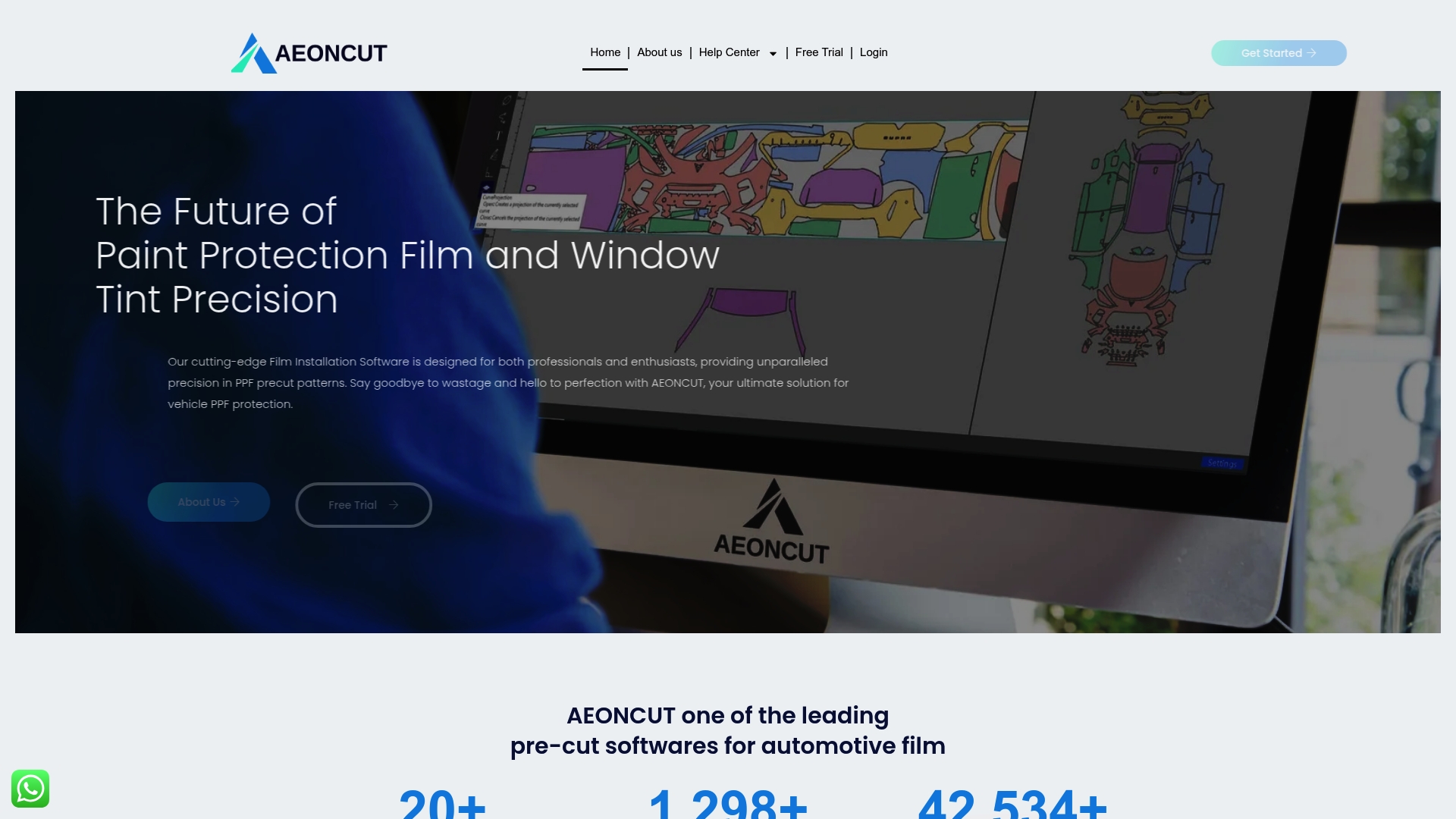Did you know that over 70 percent of professional PPF installers now depend on advanced software for every project? For businesses in paint protection film installation, picking the right digital tools can make the difference between steady growth and constant frustration. Choosing software that suits your operation helps cut waste, improve workflow, and keep your team ahead of the competition. There are practical strategies that let you develop a custom-branded solution—without building everything from the ground up.
Table of Contents
- Step 1: Assess Your Brand’s PPF Software Needs
- Step 2: Select Suitable White-Label Software Solutions
- Step 3: Customize Features And Branding Elements
- Step 4: Integrate With Your Workflow And Test Functionality
- Step 5: Launch Your Branded PPF Software And Train Your Team
Quick Summary
| Key Point | Explanation |
|---|---|
| 1. Assess Software Needs Thoroughly | Conduct an internal audit to identify workflow pain points for effective PPF software selection. |
| 2. Choose Precision-Centric Solutions | Evaluate software for cutting accuracy to avoid film fitting issues and minimize waste during installation. |
| 3. Customize for Unique Branding | Tailor features and branding elements in the software to reflect your business identity and streamline operations. |
| 4. Integrate Seamlessly with Workflows | Map existing processes, ensuring the software enhances workflow efficiency while reducing disruption during transition. |
| 5. Train Team on Software Functionality | Implement structured training programs to ensure staff effectively utilize new software capabilities to enhance service quality. |
Step 1: Assess Your Brand’s PPF Software Needs
Assessing your brand’s PPF software needs is a strategic first step in developing a tailored solution without building everything from scratch. This process helps you understand precisely what features and capabilities your installation business requires to streamline operations and improve efficiency.
Start by conducting a comprehensive internal audit of your current workflow. According to research from Top 5 PPF and Tint Cutting Software for Professionals 2025, professional installers need software that offers precise pattern cutting and minimal material waste. Examine your existing processes and identify specific pain points where technology could provide meaningful improvements.
Key areas to evaluate include pattern library comprehensiveness, customization capabilities, update frequency, and cloud integration. A professional PPF installer’s expertise depends significantly on having robust technological tools. As research indicates, factors like trained technicians and technological resources directly impact service quality.
Critical Assessment Points
Here’s a summary of critical assessment points to evaluate before selecting PPF software:
| Assessment Area | Why It Matters | Key Considerations |
|---|---|---|
| Manual Cutting Time | Measures workflow efficiency | Time spent per vehicle Potential for automation |
| Vehicle Coverage | Determines software suitability | Supported makes & models Frequency of updates |
| Design Complexity | Impacts customisation needs | Standard vs. bespoke patterns Editing tools |
| Budget | Guides solution options | Upfront cost Ongoing fees |
| Team Skill Level | Influences training requirements | Technical proficiency Learning curve |
- Current manual cutting time and effort
- Number of vehicle makes and models you regularly service
- Complexity of custom design requirements
- Budget for software investment
- Technical skill level of your team
Pro Tip: Do not just look at current needs. Consider potential growth and how your software might scale with your business.
Next, you will compile your specific requirements and begin evaluating potential software solutions that match your brand’s unique operational landscape. Preparing this detailed assessment ensures you select a PPF software platform that genuinely enhances your installation capabilities.
Step 2: Select Suitable White-Label Software Solutions
Selecting the right white-label software solutions is crucial for transforming your PPF installation business without starting from scratch. This step involves finding a pre-existing platform that can be customized to meet your specific operational requirements.
Cutting precision is paramount when evaluating potential software solutions. According to research, the software’s primary function is generating patterns translated into physical film cuts. Inaccurate cutting can compromise film fitting and lead to exposure of painted surfaces or necessitate manual trimming.
When exploring white-label options, focus on key capabilities that align with your brand’s needs. Best PPF Software 2025 highlights the importance of comprehensive features that streamline your workflow.
Consider these critical evaluation criteria:
- Pattern library comprehensiveness
- Precision of cutting algorithms
- Customization flexibility
- Integration capabilities
- Update frequency and technical support
Pro Tip: Look for solutions that offer error compensation and advanced editing features to maximize your operational efficiency.
Research suggests companies like SlaByte provide comprehensive solutions that extend beyond software into cutting machines and materials. This integrated approach can simplify your technology acquisition process and ensure consistent quality across your workflow.
Your next step will involve detailed comparisons and potential trial periods to validate the most suitable white-label software for your specific PPF installation needs.
Step 3: Customize Features and Branding Elements
Customizing features and branding elements transforms a standard white-label software into a unique solution that reflects your business identity. This critical step allows you to create a distinctive platform that resonates with your target market and differentiates your PPF installation services.
Start by identifying the core features that align with your business workflow. The Best PPF Precut Cutting Software for Precision & Speed highlights the importance of selecting adaptable software that can be tailored to your specific operational needs.
Branding goes beyond visual elements. Consider implementing customer communication features inspired by solutions like Tint Wiz. These can include automated quote generation, work agreement dispatches, appointment confirmations, and reminder systems that streamline your entire customer interaction process.
Key customization areas to focus on:
- Logo and color scheme integration
- Custom dashboard design
- Workflow automation settings
- Reporting and analytics configurations
- Customer communication templates
Pro Tip: Use multimedia to showcase your brand’s expertise. Research suggests creating before-and-after videos and hydrophobic water-bead test demonstrations can significantly enhance your online presence and customer trust.
Ensure that your customizations not only look professional but also improve operational efficiency. The goal is to create a seamless experience that reflects your brand’s commitment to quality and precision in PPF installations.
Your next step will involve implementing these customizations and testing the software to ensure it meets your specific business requirements.
Step 4: Integrate with Your Workflow and Test Functionality
Integrating white-label PPF software with your existing workflow requires a systematic approach to ensure seamless functionality and operational efficiency. This critical phase transforms your software from a standalone tool into a powerful business solution that enhances your entire installation process.
Begin by mapping your current operational workflows and identifying precise integration points. According to research on material optimization, effective PPF software can significantly reduce waste and improve pattern cutting precision. Your goal is to create a smooth transition that minimizes disruption to existing processes.
Start with a comprehensive functionality test across multiple scenarios. Simulate real-world situations including customer quote generation, appointment scheduling, and pattern cutting workflows. Research from Tint Wiz demonstrates how robust software can streamline customer interactions from initial contact through final payment.
Key integration and testing areas to focus on:
- Compatibility with existing hardware
- Accuracy of pattern cutting algorithms
- Customer communication workflow
- Material optimization capabilities
- Reporting and analytics accuracy
Pro Tip: Conduct parallel testing by running the new software alongside your current system to identify and resolve potential integration challenges before full deployment.
Material optimization represents a critical evaluation metric. As research indicates, advanced PPF software can calculate the most efficient nesting of pattern pieces, effectively reducing unused film and minimizing material waste.
Your final step will involve comprehensive staff training and gradual implementation to ensure smooth adoption of the new software platform.
Step 5: Launch Your Branded PPF Software and Train Your Team
Launching your branded PPF software marks the culmination of your strategic transformation from a standard installation service to a technologically advanced business solution. This final step involves rolling out your customized platform and ensuring your team is fully equipped to leverage its capabilities effectively.
Private Label PPF Software emphasizes the importance of a comprehensive implementation strategy that goes beyond mere technical deployment. Professional expertise is critical during this transition, with trained technicians serving as the cornerstone of successful software adoption.
Develop a structured training programme that covers both technical functionalities and practical application scenarios. Focus on helping your team understand how the new software streamlines their workflow and enhances overall service quality. Research suggests creating visual demonstration materials like installation videos and before-and-after comparisons can significantly improve learning engagement.
Key training focus areas:
- Software interface navigation
- Pattern cutting techniques
- Customer interaction workflows
- Reporting and analytics usage
- Troubleshooting common challenges
Pro Tip: Implement a phased training approach with hands-on workshops and ongoing support to ensure smooth team adaptation.
Consider documenting your training process and creating internal knowledge base resources. This approach ensures consistent skill transfer and provides a reference point for new team members.
Your final objective is to transform your software launch from a technical implementation into a strategic business enhancement that elevates your entire PPF installation approach.
Take Your Brand’s PPF Software Vision to the Finish Line
Every installation business faces unique obstacles with generic PPF tools. You know the pressure to cut down on manual errors, expand your pattern library, and keep workflows truly efficient. The article highlighted how daunting it can be to develop precision software from the ground up and why ready-made platforms offering customisation, fast updates, and accurate auto-nesting are key for growth.
Let us help you bypass those bottlenecks and accelerate your transformation into a technology leader by exploring our dedicated PPF software solutions.

Join other industry professionals who have already upgraded to AI-powered pattern cutting, unlimited cloud-based updates, and extensive support on AEONCUT. Do not let manual tasks or limited pattern options hold your business back. Explore our PPF software plans today and give your brand the cutting-edge advantage it deserves. Ready to elevate your installation process? Visit our Paint Protection Film resource hub for tips and to get started now.
Frequently Asked Questions
How do I assess my brand’s PPF software needs?
To assess your brand’s PPF software needs, conduct a comprehensive internal audit of your current workflow. Identify specific pain points and evaluate key areas such as manual cutting time, vehicle coverage, and design complexity to ensure your new software addresses your operational challenges.
What factors should I consider when selecting white-label PPF software solutions?
When selecting white-label PPF software, consider critical factors such as pattern library comprehensiveness, cutting precision, and customization flexibility. Prioritize solutions that fit your specific operational needs to enhance workflow efficiency and ensure precise film cutting.
How can I customize features in the white-label PPF software for my brand?
To customize features in your white-label PPF software, integrate your branding elements like logo and color schemes, and design a custom dashboard that fits your workflow. Focus on automating customer communication processes to streamline interactions and enhance user experience.
What steps should I take to effectively integrate PPF software with my existing workflow?
To integrate PPF software with your workflow, start by mapping out your current operations and identifying integration points. Conduct functionality tests across real-world scenarios to ensure the software complements your existing processes, ultimately minimizing disruptions.
How do I ensure my team is trained to use the new PPF software effectively?
Ensure your team is trained by developing a structured program that covers navigation, pattern cutting techniques, and customer workflows. Use visual materials and hands-on workshops to enhance learning engagement and support ongoing improvement.
What is the timeline for launching my branded PPF software?
The timeline for launching your branded PPF software can vary, but aim for a phased approach allowing time for customization, integration, and team training. Typically, a comprehensive rollout can be achieved within 30–60 days, depending on the complexity of your setup and training needs.
Recommended
- Building a PPF Business in 2025: From Tools to First Clients – AEONCUT PPF Pre-cut Cutting software
- Building a PPF Business in 2025: From Tools to First Clients – AEONCUT PPF Pre-cut Cutting software
- Building a PPF Business in 2025: From Tools to First Clients – AEONCUT PPF Pre-cut Cutting software
- Building a PPF Business in 2025: From Tools to First Clients – AEONCUT PPF Pre-cut Cutting software



